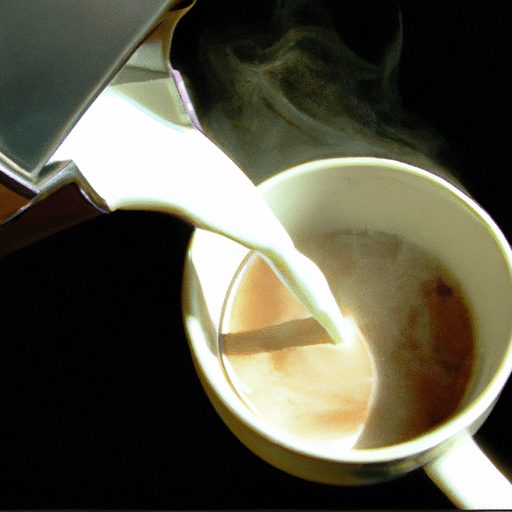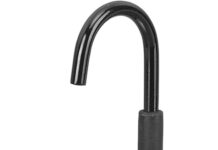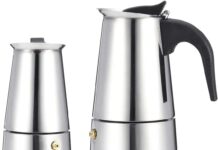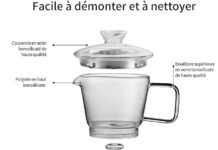Have you ever wondered if it’s possible to put milk in your beloved Bialetti coffee maker? Well, the answer to this hotly debated question is right here! In this article, we explore the potential risks and rewards of using milk in your Bialetti and provide you with all the necessary information to make an informed decision. So, get ready to embrace your inner barista and discover the truth about mixing milk and Bialetti!
Can I put milk in my Bialetti?
Overview of Bialetti coffee makers
Bialetti coffee makers are renowned for their quality and functionality. Founded in 1919 by Alfonso Bialetti, this Italian brand has become synonymous with stovetop coffee brewing. Bialetti coffee makers are known for their distinctive octagonal shape and the ability to brew a rich and flavorful espresso-style coffee. They have gained immense popularity worldwide and are commonly used in households and coffee shops alike.
Understanding the types of Bialetti coffee makers
Bialetti offers various types of coffee makers to suit different brewing preferences. The most popular models include the Moka Pot, Espresso Maker, French Press, and Stovetop Percolator. Each type has its unique design and brewing method, catering to different taste preferences and coffee volumes.
-
Moka Pot: The Moka Pot is the classic Bialetti coffee maker. It consists of a three-chambered design that allows for the pressurized extraction of coffee. This model is ideal for brewing strong and concentrated coffee.
-
Espresso Maker: The Bialetti Espresso Maker is designed specifically for those who enjoy traditional espresso brewing. It features a compact size and a convenient water tank, making it suitable for home use.
-
French Press: Bialetti’s French Press coffee maker offers a straightforward and hands-on brewing experience. It consists of a glass or stainless steel container with a plunger and mesh filter. This model is perfect for those who prefer a full-bodied and rich cup of coffee.
-
Stovetop Percolator: The Stovetop Percolator is a versatile option that allows for different brewing styles. It features a percolation process that delivers a robust and flavorful coffee. This model is suitable for those who enjoy experimenting with different brewing techniques.
The principle of operation
Bialetti coffee makers operate on a simple yet effective principle. They use the combined power of heat and pressure to brew coffee. The process begins with water being heated in the lower chamber until it reaches boiling point. The steam generated from the boiling water creates pressure, which forces the hot water to pass through the ground coffee located in the middle chamber. The brewed coffee then collects in the upper chamber, ready to be enjoyed.
The risk of putting milk in a Bialetti
While Bialetti coffee makers are excellent for brewing coffee, they are not designed for use with milk. Putting milk directly into a Bialetti can lead to several problems. Firstly, the hot milk can scorch and burn, resulting in a burnt milk taste in your coffee. This can significantly impact the flavor and quality of your brew. Additionally, the milk can create deposits and residue in the brewing chamber, leading to clogging and potential damage to your Bialetti.
Effects of putting milk in a Bialetti
Putting milk in a Bialetti can have several negative effects. One of the most noticeable effects is a burnt milk taste in your coffee. When milk is heated directly in the Bialetti, it is prone to scorching and developing a bitter flavor. This can overpower the natural flavors of the coffee and diminish your enjoyment of the beverage.
Furthermore, the milk can create build-up and residue in the brewing chamber of the Bialetti. Over time, this can lead to clogged filters and reduced water flow during the brewing process. It may also result in the deterioration of the coffee maker’s performance and lifespan.
Additionally, putting milk in a Bialetti requires increased cleaning efforts. The milk deposits and residue can be challenging to remove, requiring thorough cleaning after each use. This can be time-consuming and may affect the overall convenience and ease of using a Bialetti.
Lastly, using milk in a Bialetti poses a risk of damaging the coffee maker itself. The combination of high heat and milk can cause the milk to stick to the metal surfaces and potentially lead to corrosion or discoloration.
Alternatives to using a Bialetti for milk-based beverages
If you prefer milk-based beverages like lattes and cappuccinos, it is recommended to explore alternative brewing methods specifically designed for these drinks. Some options include:
-
Using a milk frother or steam wand: Milk frothers, both manual and electric, offer a convenient way to froth milk for lattes and cappuccinos. They can produce creamy and velvety milk foam to enhance your coffee experience.
-
Electric coffee machines with built-in milk frothers: Many electric coffee machines come with built-in milk frothers, allowing you to create barista-quality milk-based beverages with ease. These machines often offer various settings for different milk textures, catering to individual preferences.
-
Manual milk frothers: Manual milk frothers, such as handheld frothers or pump-style frothers, are affordable and easy to use. They can produce milk foam suitable for a range of milk-based drinks.
-
Pour-over coffee methods with steamed milk: If you still want to enjoy the rich flavor of coffee brewed in a Bialetti, you can use alternative methods, such as pour-over brewing, and then add steamed milk to create your desired milk-based drink.
Cleaning a Bialetti after making milk-based beverages
If you accidentally put milk in your Bialetti or decided to experiment with milk-based drinks and used the coffee maker for that purpose, thorough cleaning is essential. Follow these steps to clean your Bialetti effectively:
-
Disassemble the Bialetti: Carefully take apart the Bialetti, separating the different chambers and removing the filter and gasket.
-
Remove milk deposits and residue: Use a soft brush or sponge to scrub away any milk deposits or residue from the brewing chamber. Pay close attention to the filter and other small crevices where milk residue may accumulate.
-
Wash with detergent: Wash all the parts of the Bialetti with mild dish detergent and warm water. Ensure that all traces of milk and residue are thoroughly removed.
-
Rinse thoroughly: Rinse each component of the Bialetti with clean water to remove any detergent residue.
-
Dry completely: After rinsing, dry all the parts of the Bialetti thoroughly before reassembling. Ensure that no moisture remains, as this could lead to mold or damage to the coffee maker.
Tips for using a Bialetti for coffee and milk
If you still want to use your Bialetti for coffee and incorporate milk into your beverage, here are some helpful tips to maximize your experience:
-
Preheating the Bialetti: Before starting the brewing process, preheat the Bialetti by running it under hot water. This helps maintain a stable temperature throughout the brewing process.
-
Adding milk after brewing the coffee: After your coffee is brewed, pour it into a separate container, such as a cup or pitcher. Then add the desired amount of milk to create your desired coffee and milk ratio.
-
Using a diffuser for gentle heat: If you are concerned about overheating the milk, use a heat diffuser on your stovetop. This helps distribute the heat evenly and prevents scorching.
-
Avoiding high heat and rapid boiling: When brewing coffee in a Bialetti, it is important to avoid high heat settings and rapid boiling. This minimizes the risk of scorching the milk and damaging the coffee maker.
-
Regular maintenance and cleaning: To ensure optimal performance, regularly clean and maintain your Bialetti. This includes cleaning after each use and periodically deep cleaning to remove any build-up or residue.
Conclusion
In conclusion, it is not recommended to put milk directly into a Bialetti coffee maker. Doing so can lead to burnt milk taste, clogging of the brewing chamber, increased cleaning efforts, and potential damage to the coffee maker. Instead, consider using alternative methods specifically designed for milk-based beverages, such as milk frothers or electric coffee machines with built-in milk frothers. If you still want to use your Bialetti for coffee, be sure to add milk separately after brewing and follow proper cleaning procedures to maintain its performance and longevity.
Frequently asked questions (FAQs)
Can I use Bialetti to froth milk?
No, Bialetti coffee makers are not suitable for frothing milk. They are designed specifically for brewing coffee and are not equipped with the necessary features to create frothed milk.
What happens if I put milk in a Moka Pot?
Putting milk in a Moka Pot can result in a burnt milk taste in your coffee. The milk is susceptible to scorching and can adversely affect the flavor and quality of your brew. It can also lead to clogging of the brewing chamber and potential damage to the Moka Pot.
Can I use a French Press for milk-based coffee?
Yes, a French Press can be used for milk-based coffee. After brewing the coffee in the French Press, you can add hot milk to create milk-based beverages like lattes or cappuccinos. However, be cautious of scorching the milk and clean the French Press thoroughly afterward.
How can I prevent milk from burning in a Bialetti?
To prevent milk from burning in a Bialetti, it is advisable not to put milk directly into the coffee maker. Instead, brew your coffee in the Bialetti and then separately add your desired amount of hot milk.
Is it safe to use a Bialetti on an induction cooktop?
Bialetti offers specific models designed for use on induction cooktops. These models feature a magnetic base that allows them to work efficiently and safely on induction stovetops. Before purchasing a Bialetti for an induction cooktop, make sure to check the product specifications to ensure compatibility.




































